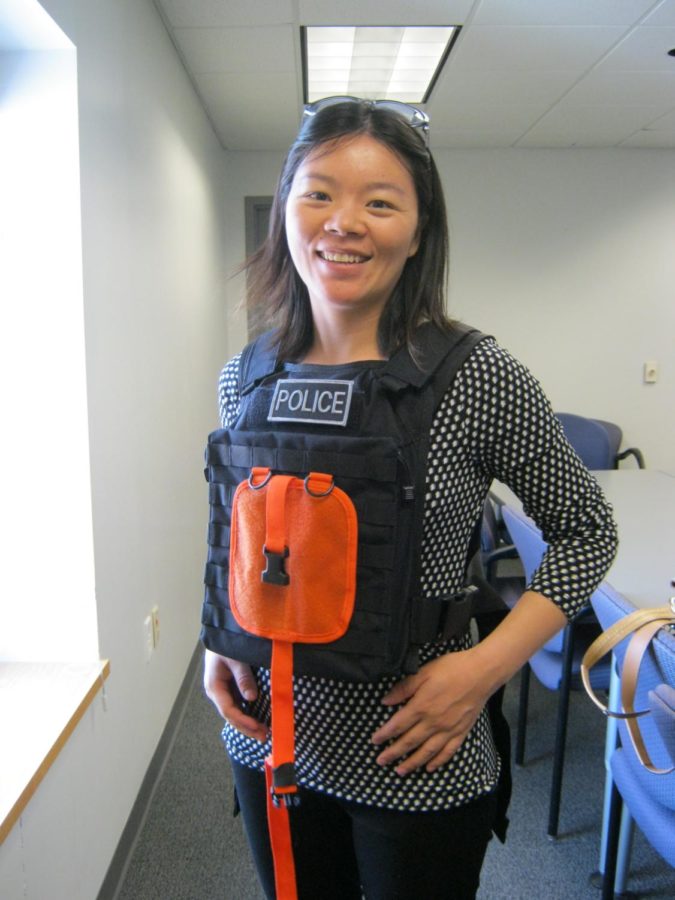ISU researchers team up to improve public service workers’ gear
Courtesy of Dr. Ellen McKinney
With the assistance of the Ames Police Department, the design team was able to sample the current bullet-resistant safety vest law enforcement officials use currently.
January 17, 2014
Typically, when people think of designing clothes, the primary target is for fashion. A group of ISU researchers is challenging that thought process by using its knowledge to help improve apparel for law enforcement and others.
Iowa State’s team of experts have been sought out to help design protective and functional clothing for professionals, such as firefighters, police officers and military personnel.
Recently, ISU researchers in apparel, merchandising and design competed with Indiana’s aeronautics and engineering team, South Carolina’s business consulting company and New Mexico’s federal science research center in the U.S. Department of Justice challenge.
Iowa State ended up being one of four finalists in the national competition for creating a method for nondestructive testing of protective vests used by police officers. The team ended up writing a 25-page proposal explaining its design.
It has been stated by experts that Iowa State has the power and ability to establish itself nationally and internationally as design experts for apparel design in criminal justice. Not many universities are engaged in this type of research, and not one dominates in this field of expertise.
Ellen McKinney, an assistant professor of apparel, events and hospitality management led Iowa State’s team in a recent competition that proposed numerous creative and effective ways to determine if a police’s soft body armor could last more than five years. The squad was granted a $6,250 award from the National Institute of Justice for its resourceful proposition.
Iowa State’s team has been recognized for its knowledge of soft body armor materials. It has also been noticed for having a clear outline of its procedure, making it professional and ready to explain its protocol.
Iowa State also stood out when judges realized that researchers interviewed police officers and asked what they want in protective body armor.
“Interviewing the police officers made a huge impact and made us change our ideas about our design,” McKinney said.
Not only does Iowa State design for law enforcement professionals, but the research team also strives to work on projects medical, military and athletic professions among others.
McKinney revealed that the team wants to design clothes for the Army. Researchers need to factor in the various types of environments they may be in.
“We need to test the fabric, the mobility and how one would react to the garment in certain situations,” McKinney said.
This type of work is multidisciplinary, meaning, researchers need to have an education with apparel, merchandising and design, along with material science, mechanical engineering, food science and others.
McKinney also said that another project that is ongoing is working with the theory of garments taking energy from the sun.
“Jackets that are solar-powered will be able to provide power for your mobile phone or GPS device,” McKinney said.
Having solar-powered garments will allow people to charge portable electronics while also being economically friendly.
“I see our research team starting this project very soon,” McKinney said.
This type of project takes a lot of testing and knowledge from different angles of research. McKinney believes there are many types of clothing that can be better designed in specific situations to benefit others.







